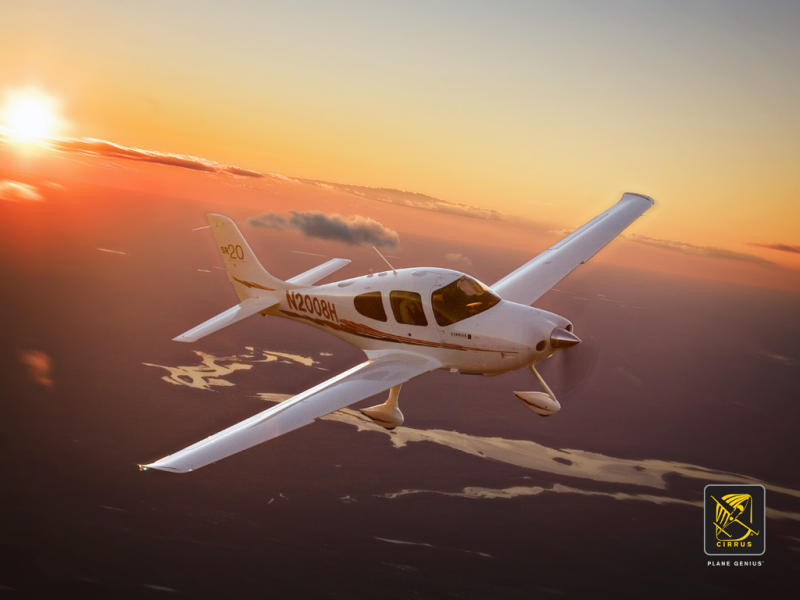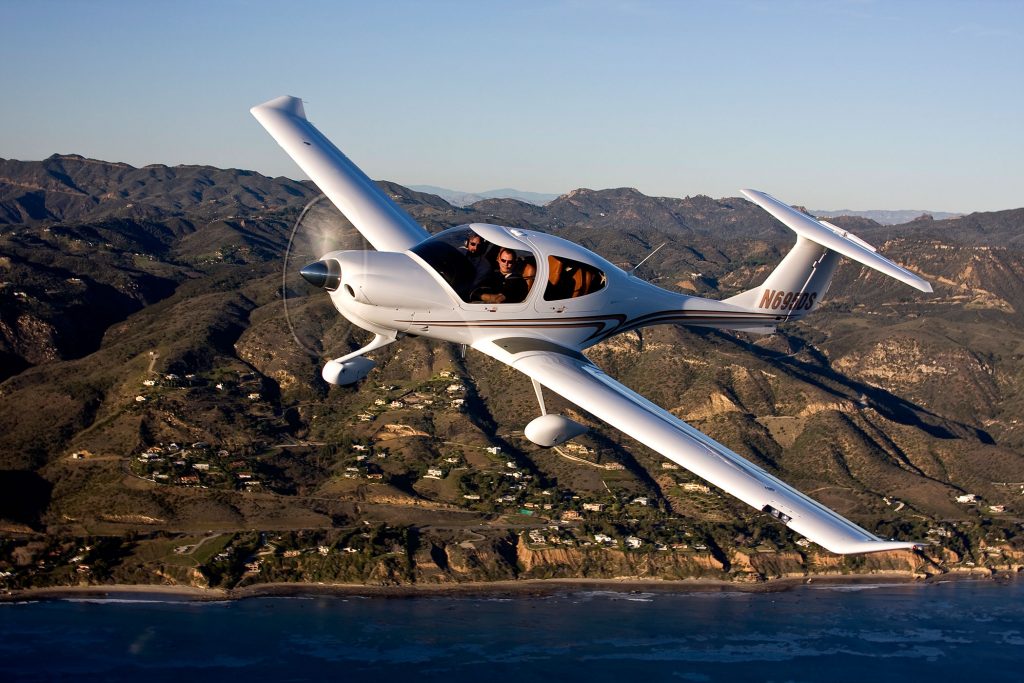Note: For this article I am comparing a 2008 Cirrus SR20 G3 and a 2008 Diamond DA40 XLS.
Aircraft shopping can be a tedious process. First, a buyer needs to know what the mission is. How far will flights typically be, how many people will be on board, and how fast does the airplane need to be. Then, the buyer has to figure out what the budget is. Finally, a prospective owner needs to figure out how much airplane he or she can handle.
Two very good airplanes for newer pilots transitioning from a flight school 172 who need a faster airplane to build experience in, but also want to experience a glass panel, are the Cirrus SR20 G3 and the Diamond DA40 XLS.
Cirrus SR20 G3
The 2008 Cirrus SR20 G3 is a good airplane. The G3 is equipped with the 6 cylinder, Continental IO-360-ES, 200 HP engine. Performance-wise, an owner can expect 135-140 knots true at 9 GPH (Lean of Peak) or 145-150 knots true at 11.5-12 GPH (Rich of Peak). The 3 blade propeller equipped models have better takeoff and climb performance than the 2 blade propeller equipped planes, especially in high density altitude conditions.
The airplane is equipped with the Avidyne Entegra EX 5000 glass panel system. Most models out there will have Avidyne’s CMAX (Chart View) and all will have the Avidyne EMAX (Engine Monitoring). All came from the factory with the STEC 55x autopilot (though a handful will have the STEC 55 SR, which doesn’t have glideslope functionality). They also came from the factory with dual Garmin 430s. Most units have been upgraded to WAAS.
Some owners have upgraded the autopilot to the Avidyne DFC 90, which is a nice upgrade. The STEC 55x is a rate based autopilot which takes it’s commands from a hidden turn coordinator that is behind the instrument panel in front of the co-pilot’s seat. The STEC has some crosswind limitations on approaches where the pilot can actually fly better than the autopilot.
The DFC 90, however, is an attitude based autopilot that takes it’s commands from the attitude indicator on the Primary Flight Display (PFD). It also adds a Straight and Level button as well as an Indicated Airspeed hold button, adding safety and functionality. It does much better in crosswinds on an instrument approach then the STEC.
A select few SR20s have been upgraded to a single (or dual) Garmin GTN 650 touch screen GPS unit. The GTN 650 is a very nice upgrade. The Garmin 430 is a great unit, but the learning curve with the GTN 650 is much less. The touch screen setup makes a little more sense to the new user.
Values on the 2008 SR20 G3 with 1,000 hours or less run somewhere between $220,000-$260,000, depending on total time and equipment.
Diamond DA40 XLS
A handful of 2007 XLS DA40s were made, but not many. Most XLS models you will see are 2008 and later. These are equipped with the Lycoming IO-360, 4 cylinder, 180 HP engine with the Powerflow Exhaust STC. Due to the Powerflow Exhaust, the performance is equal to the SR20. At 6,000-8,000 feet, you will routinely see 140 knots true at 10-10.5 GPH. Higher altitudes will give slightly better performance and lower fuel burn. Like the SR20, the Diamond DA40 XLS comes with either a 2 blade or 3 blade prop. Go with the 3 blade as the takeoff and climb performance is much better.
Where the DA40 XLS has a leg up on the 2008 SR20 G3 Avidyne is in the avionics. Diamond got on the Garmin G1000 train a little sooner than Cirrus did and the XLS is equipped with the G1000 and GFC 700 autopilot. The Garmin GFC 700 autopilot is the best GA autopilot I have flown with. It is an amazing piece of equipment.
Most, if not all, DA40 XLS models will have both WAAS and Synthetic Vision. Cirrus didn’t get Synthetic Vision till they put the Cirrus Perspective by Garmin in their aircraft in the middle of 2008.
The DA40 has great visibility due to the massive amount of glass surrounding the pilot. The big glider wings give it excellent pop off the runway, but quite a different climb pitch attitude than most other piston single engine airplanes. The airplane does like to float on landing if the pilot doesn’t get the speed right.
Values on the 2008 Diamond DA40 XLS equipped with the Garmin G1000 are around the low-mid $200,000 range.
Comparison
Performance wise, the airplanes are about equal. Rich of peak, the Cirrus out performs the Diamond, but uses more fuel. Both have about 5 hour ranges (though the Cirrus has bigger fuel tanks, 56 gallons usable compared to the Diamond long range tanks of 50 gallons usable). Useful load is slightly better in the Diamond due to the fact that the Lycoming engine has 2 fewer cylinders than the Cirrus. The Cirrus does have a roomier back seat, a larger baggage area, and a side stick instead of a center stick, but the DA40 has a back door. The Cirrus also has the CAPS system, though an owner has to do a $15,000 repack every ten years. Airplane values are about the same.
I give a slight edge to the Diamond, though, and here’s why. For about the same price, a purchaser can get the Garmin G1000 system complete with the GFC 700 autopilot in the DA40 XLS. The Avidyne and STEC system is great, but the Garmin system is definitely above and beyond. To get the Garmin G1000 in an SR20, you’d have to look at the Cirrus Perspective by Garmin, which came out in late 2008, and you’d be paying $300,000 or more for a single engine piston with 200 HP (though you do get Air Conditioning!).
So for my money, I would go for the Diamond DA40 XLS. I believe you get a little bit more bang for your buck and you don’t lose anything with the DA40 XLS. Don’t get me wrong, I love the Cirrus, but comparing the two, I think the Diamond DA40 XLS rates a little higher.


